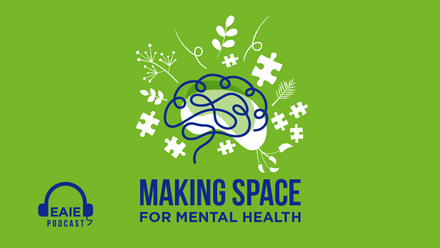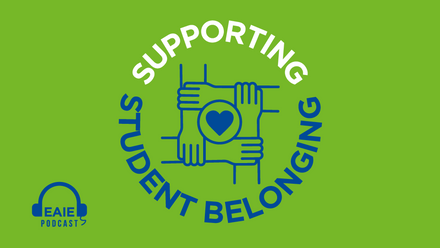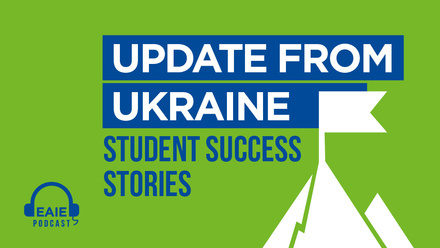Tips for using mindfulness to help international students adapt

Have you noticed that mindfulness has become an increasingly popular psychological remedy for all sorts of mental pains in modern society? In recent years, mindfulness has become a standard method for treating anxious and depressed students, as well as burned-out professionals. What’s more, it has even been found to be effective in helping international sojourners and learners adjust and adapt.
For those unfamiliar with the practice of mindfulness, it is the art of paying full attention to ourselves (internal) and the world around us (external) – without being too judgemental about what we notice. Our experience has shown that this can be a valuable skill for dealing with the challenges that many students face while living and learning in another country.
For instance, mindfulness applied to an uncomfortable conversation with a teacher would entail noticing one’s stress-eliciting thoughts and feelings, such as worries or resentments, without judging oneself for having them. Externally, mindfulness would entail paying attention to the teacher (eg details of their verbal and non-verbal expressions) and the context in which the conversation occurs (status differences, situational aspects etc) – while refraining from hasty judgements or premature conclusions, for example regarding the teacher’s thoughts and intentions.
In dealing with the world, mindfulness enhances our ability to overcome prejudice and deception. In dealing with ourselves, mindfulness entails being present in the moment and paying attention to internal experiences without insisting on their absolute truth or blaming ourselves for having them. Altogether, this means mindfulness can be a powerful tool for advising and counselling international students.
What exactly is mindfulness?
In a nutshell, mindfulness is observing everything that is unfolding at any given moment but resisting the urge to evaluate or immediately act upon the impressions, thoughts or feelings associated with it. Mindfulness is purposefully directed attention coupled with postponed judgement. It allows us to let go of limiting (world-)views and (self-)concepts, and to form novel mental categories adaptive in dealing with changing and diverse environments.
Mindfulness is purposefully directed attention coupled with postponed judgement
Mindfulness implies a slightly detached standpoint that allows us to take a step back and look at ourselves with a curious, open and compassionate mindset. This way, we can learn and accept how our mind functions while keeping an eye on the big picture, including our own and others’ needs and vulnerabilities. Paradoxically, mindfulness helps us with remaining in or regaining control by embracing our shortcomings as human beings and radically accepting reality as it is, including its oftentimes aversive, uncertain or ambiguous nature.
Putting theory to practice in student counselling and advising
During our many years of providing counselling and guidance to international students at our respective institutions, we have encountered many students brought to tears by the various challenges they struggled to cope with. During our first few years of engagement, we focused on what was considered ‘good practice’ in our respective professions. For international advisors, that meant providing information on additional resources; for psychological counsellors, conducting standard cognitive-behavioural interventions.
However, after recognising mindfulness as an evidence-based counselling tool and practicing mindfulness ourselves, we understood its value for our students. If only we could help them to be less in their minds and more situated in the present moment, more self-aware of their transient states of sadness and happiness, not jumping to any forced conclusion and radically accepting their own existence, it could help them tremendously in coping with their moods and situations! Soon after this important realisation, we both started to implement mindfulness into our counselling and advising sessions.
If we can help students to be less in their minds and more in the present moment, it can help them tremendously in coping with their moods and situations
Based on our experience, we suggest starting with these five steps when introducing the art of mindfulness to international students:
1. Invite the student to take several deep breaths. You may want to suggest breathing in through the nose and out through the mouth, allowing approximately twice as much time for breathing out. This intervention will make the student relax, refocus and distract them from anxiety-related feelings and sensations.
2. Ask the student to focus their attention on the present moment, on being in the ‘here-and-now’. Paying attention to where they are in the present moment in space and time will help them stop overthinking and calm down their hyperactive mind.
3. Instruct the student to focus on scents, sounds or sights that they may be able to perceive inside or outside the room. Using this technique will help the student to engage different senses for creating an immediate ‘here-and-now experience’. It will allow them to experience more details of the things they focus on, including how what they perceive makes them feel.
4. Invite the student to look at one aspect of their concern with exactly the same curious and open mindset. Encourage them to exercise self-compassion and accept how they think and feel about the situation. Emphasise that there are no ‘good’ or ‘bad’ thoughts or feelings, and that difficult experiences inevitably come and go with time. This open, curious and non-judgemental perspective will help them to not only acknowledge and accept difficult thoughts and feelings and be kinder to themselves, but will also encourage them to accept reality as it is.
5. Finally, share the following mindfulness reflection before asking them how they liked the intervention: “Your heart is like the sky, while your mood is like the weather. There will be sunny days and rainy days. Weather comes and goes, but the sky is always clear.”
Most of your students will likely tell you they loved the mindfulness practice, leaving the room much calmer than before. Some will even share with you that they experienced an unexpected decrease in their anxiety levels, communicated more confidently with teachers, developed alternative perspectives on their problems and even came up with better solutions for them.
There are abundant ways of implementing mindfulness in your daily practice with international students. We recommend: start today!






